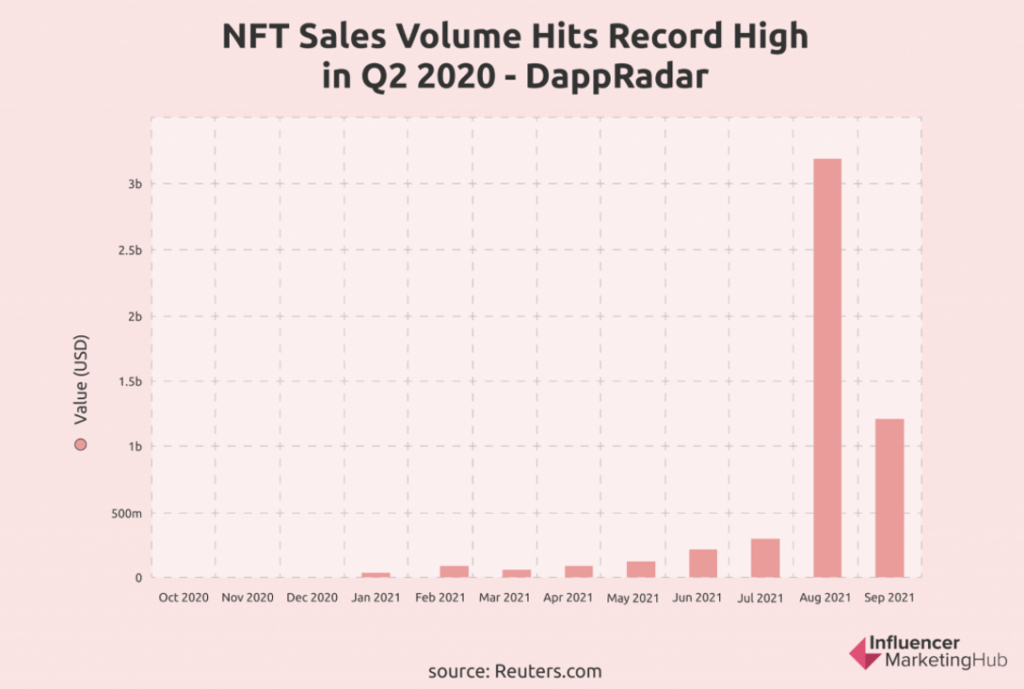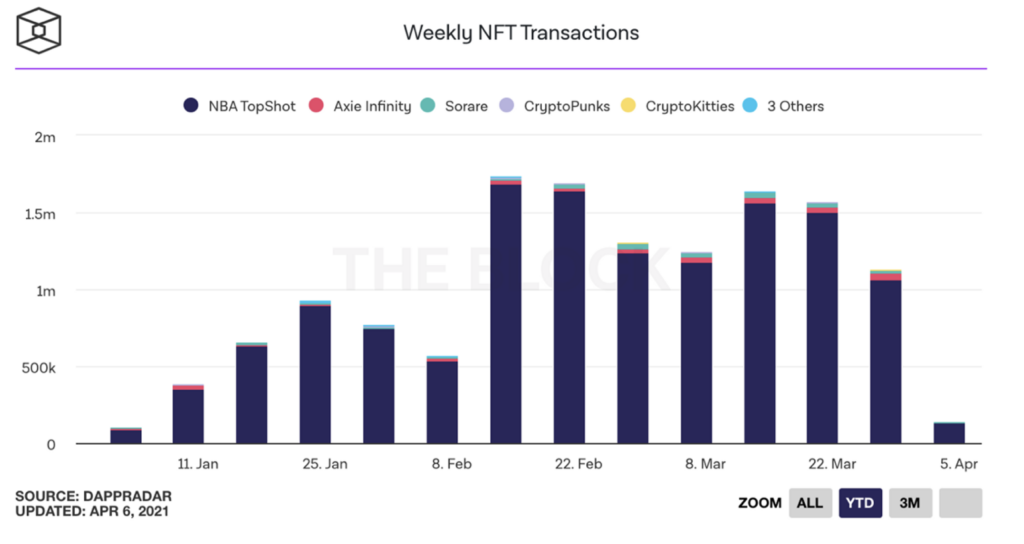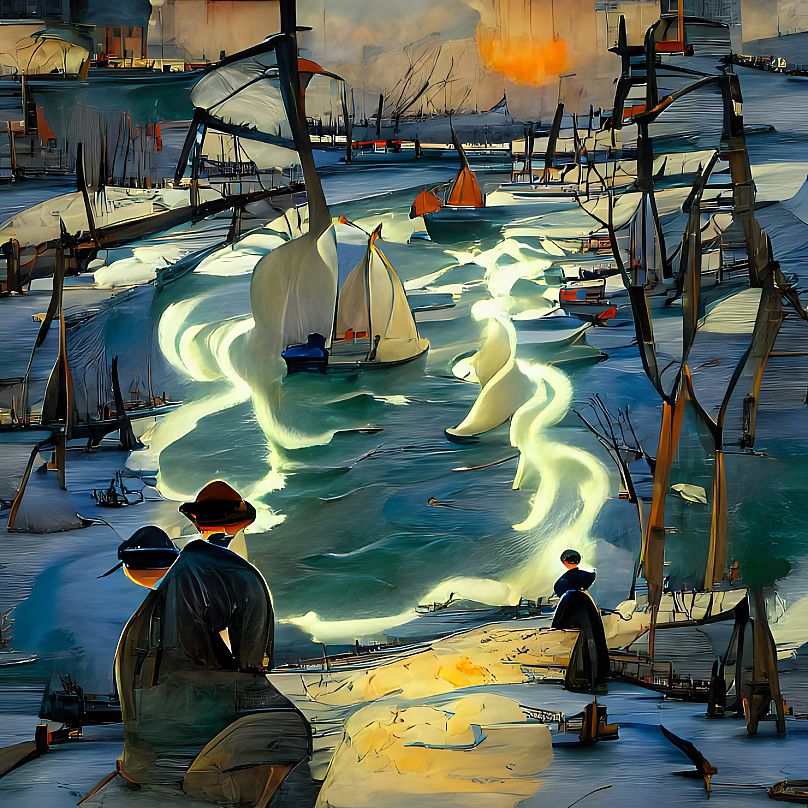A music NFT is a distinct digital asset that is issued on a blockchain and is linked to an individual song, EP, album, or video clip.
Non-fungible tokens (NFTs) have been making waves in the art world, with generative art collections becoming increasingly popular among Web3 enthusiasts and in the traditional art world. However, NFTs as immutable records of ownership for digital items have many more use cases.
While the music industry’s global revenue is expected to surpass $65B in 2023, these earnings predominantly flow into a few large platforms and major record labels. As a result, many artists have started exploring the use of NFTs as a new way of distributing and monetizing music.
Music NFTs have the potential to revolutionize the way artists create, distribute, and earn income from their music. In contrast to the current model, where artists have to rely on record contracts, brand deals, and extensive touring to advance their careers, music NFTs present artists with the opportunity to generate income solely based on their primary focus—creating music.
In this post, we’ll look at what music NFTs are and how they work and examine how this technology can transform the music industry through improved economics and more immediate fan-artist relationships.
What Is a Music NFT?
First, a quick primer on NFTs. An NFT is a token on a blockchain that is unique. Each NFT has a unique token ID and contract address that sets it apart from other NFTs. While an NFT can be linked to any media, what’s typically associated as the “content” of an NFT is stored in its metadata, which can point to images, videos, music, or other forms of media.
In a nutshell, a music NFT is a distinct digital asset that is issued on a blockchain and is linked to an individual song, EP, album, or video clip. Artists can create unique digital assets as NFTs that represent their music, concert tickets, exclusive merchandise, or virtual experiences, which people can then own, use, or trade. Purchasing a music NFT can be seen as a way of supporting an artist—akin to buying their music directly—while still allowing others to enjoy their work.
Music NFTs enable artists to forge a more direct relationship with their collector community. By helping to circumvent larger platforms, music NFTs give artists the chance to build a more direct connection with their fan base, who can also benefit from new ways of interaction and ownership.
Some music NFTs are generated entirely by an on-chain algorithm with no external dependencies. Generative music posted on-chain empowers artists to create a permanent imprint on an immutable ledger and preserve their creation for future generations exactly as originally intended.
How Do Music NFTs Work?
In essence, music NFTs help shift the ownership of music from companies to individuals. While record labels continue to play an important role in the music industry and can serve several business functions for artists, music NFTs allow artists the option to maintain full ownership of their creations.
Some music NFTs include revenue and royalty-sharing features that can provide a source of income for artists without them having to rely solely on earnings from streaming services, building a large following, or engaging in excessive marketing. Instead, they can rely on a smaller group of highly dedicated fans.
As such, music NFTs can help emerging artists who may not have access to traditional funding or distribution channels. With the rise of Web3 platforms and marketplaces, musicians can independently create and sell their NFTs, giving them greater control over their careers and revenue streams.
Another important benefit is the ability to create token-gated communities that enable fans to participate in exclusive events and promotions, opening up secondary markets for fandom that alter the dynamics of being a fan and enable more integrated fan communities.
How Will Music NFTs Impact the Music Industry?
$0.004 Per Stream Vs. $40 Per Mint
Since the onset of streaming, opportunities for musicians to earn an income have significantly decreased. NFTs turn pieces of music into a commodity, like a piece of art that can be bought and sold, similar to the earlier days of the music industry with vinyl records, cassette tapes, CDs, and MP3s.
Currently, many artists find it difficult to see significant returns on streaming platforms. According to some estimates, one stream on Spotify amounts to about $0.004 paid to the artist, meaning that one million streams net roughly $4000. Getting that many streams isn’t realistic for most independent artists. It’s important to note that the issue here isn’t necessarily with individual companies but more with the underlying economic model. Offering the ability to stream a large portion of the music library of human history for the equivalent of ~$10 a month creates thin margins both for the platforms and the creators, and is likely leading to a race to the bottom.
Real life examples:
- Kings of Leon’s NFT Album Release:
- In March 2021, the American rock band Kings of Leon became one of the first major musical acts to release their album as an NFT. The album, titled “When You See Yourself,” was made available for purchase as three types of NFTs, each offering different perks such as exclusive audiovisual art and a “golden ticket” for VIP concert experiences.
- 3LAU’s Ultraviolet NFT Album:
- Electronic dance music (EDM) artist 3LAU (Justin Blau) released his album “Ultraviolet” as an NFT in February 2021. The NFTs included special edition music and unique experiences, allowing fans to have a more immersive and exclusive connection to the artist.
- Beeple’s Collaborations with Musicians:
- Digital artist Beeple (Mike Winkelmann) has collaborated with various musicians to create NFT-based visual experiences. Notably, his collaboration with EDM artist Deadmau5 resulted in the creation of unique audiovisual NFTs that represented a fusion of music and visual art.
- Grimes’ NFT Art and Music Auction:
- Canadian musician Grimes, known for her experimental music and visual art, auctioned digital art and unreleased music as NFTs. The auction included exclusive pieces of art and audio content, providing fans with a chance to own unique and limited digital assets.
- Steve Aoki’s NFT Journey:
- Renowned DJ and producer Steve Aoki has embraced NFTs as a way to engage with his fan base. He has released NFTs featuring exclusive music, behind-the-scenes content, and virtual experiences. Aoki has also experimented with interactive NFTs, allowing fans to participate in challenges and unlock additional content.
My opinion:
While the potential for NFTs to revolutionize the music industry is evident, it’s crucial to acknowledge the inherent challenges. The tokenization of music rights through NFTs, may introduce complexities in terms of legal frameworks and the fair distribution of revenues.
Additionally, concerns about market volatility and environmental impact raise questions about the long-term sustainability of this trend. While blockchain technology offers direct artist-fan connections, it’s essential to carefully navigate the evolving landscape, considering both the promises and pitfalls of integrating NFTs into the music ecosystem. So, to be honest I’m not a fan of this happening.
Sources:
ChatGpt – version 3.5 ( https://chat.openai.com/share/1086341a-c645-46a5-86e3-9f6049e21891 )









